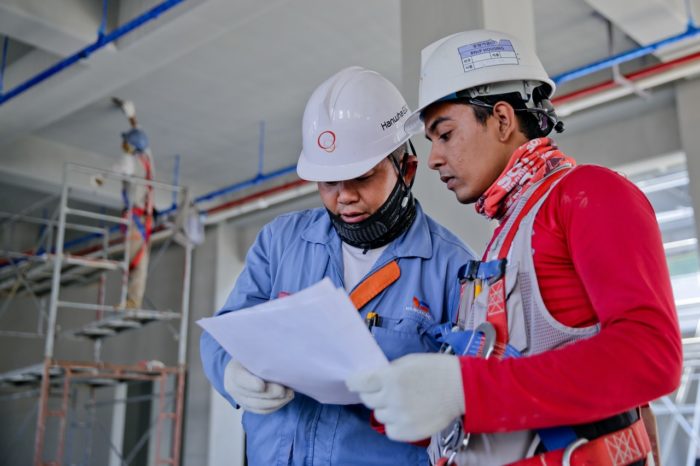
Did you know that June is National Safety Month? As important as safety is in any business, it is so often overlooked! But there’s a simple way to motivate your employees to take safety seriously: keep it front and center. The fact is, the more you talk about safety, the safer your workplace will become. As you most likely already use this strategy for customer service and performance standards, why not do the same with safety?
Ready to get started? Here are a few tools and tactics you can use to keep safety front-of-mind in your own workplace!
1. Company Newsletter
Do you send out a monthly or quarterly company newsletter? If you don’t already, this is a great opportunity to communicate with employees. (And not just about safety!) Each edition could have an article on a specific safety or wellness topic or a fun quiz with the chance to win prizes. Also, you can include reminders of important company safety policies and emergency contacts.
2. Two-Way Communication
In order to effectively communicate with employees, you can’t simply talk at them. Instead, try providing employees a channel to document and report safety concerns they’ve noticed. This could be a physical form, an anonymous comment box, or even an online survey link.
Fostering two-way communication in this way promotes employee engagement in proactive safety assessments of your workplace. However, for this practice to work, employees need to feel comfortable bringing concerns to your attention and confident that you’ll address them.
3. Provide Training
If you want employees to be safe, it only makes sense that you have to educate them on how to do so! One option is to offer monthly 10-15 minute trainings on specific safety or wellness topics. For example, you could provide training on anything from avoiding sleep deprivation to the health costs of stress. Promote employee involvement by asking various employees to facilitate them. And don’t forget to keep things fun!
Alternately, you can purchase safety training DVDs and kits. With this option, you don’t even need to worry about putting together content. It’s a no-stress way to cover your employee training without adding more work to your own plate!
4. Use Labels and Signs
Labels, signs, and posters are a cheap and effective way to quickly communicate important safety information. (And depending on your industry, they may even be required!) They’re usually very simple and straight-forward, relying primarily on pictures to communicate hazards and procedures.
Again, providing training can be a challenge–especially when adding new employees! So the more times, ways, and places you are able to communicate safety information, the better!
5. Keep Things Clean
Creating a safe and healthy workplace is critical to your role as an employer. In order to minimize the likelihood of unnecessary accidents, make a habit of tidying up. Removing boxes or other things that start to pile up, cleaning up spills promptly, and even making sure cords and wires are out of the way can go a long way in preventing injuries.
6. Promote Office Ergonomics
Safety isn’t just for labor-intensive jobs. On the contrary, even traditional office jobs have their own set of unique risks. For example, carpal tunnel, back pain, or vision problems. Therefore, taking the time to implement good ergonomics can save you time and money, making employees more productive and healthier.
Top Tip: You can find an Office Ergonomics Evaluation Checklist in your HR Support Center here! Give us a call at (866) 946-2032 if you need any help logging in!
7. Ask the Pros
When it comes to safety, you don’t have to go it alone! One great resource is your workers’ compensation carrier. You can often get great safety tips, trainings, and ideas from them. And you might even be able to get write-offs! Like you, they want to keep costs down, so they’ll likely appreciate your efforts to make safety a priority and do what they can to help.
Additionally, there is an entire section of your HR Support Center dedicated to Safety. Log on to access handbook policies, 2-minute HR trainings, checklists, and guides! Are you on our HR On Demand service? Then you can also get live assistance from our team of HR Pros whenever you get stuck!
What do you think?
These are tools that any organization can use, but remember that some industries have special trainings required by OSHA. In any case, remember that your goal should be to have a safe workplace, not to maintain a workplace with absolutely no recorded accidents or injuries. Keep safety and wellness on the minds of your employees, and you’ll go a long way toward making your workplace as safe as possible.
Want more help keeping your business safe and compliant? Ask about our comprehensive suite of HR Services (including a full library of handy guides, articles, and checklists!) to learn how SDP can help. And be sure to follow us on Facebook, Twitter, and LinkedIn for even more HR tips and tricks to make sure you never miss a beat!
Photo by Anamul Rezwan from Pexels
